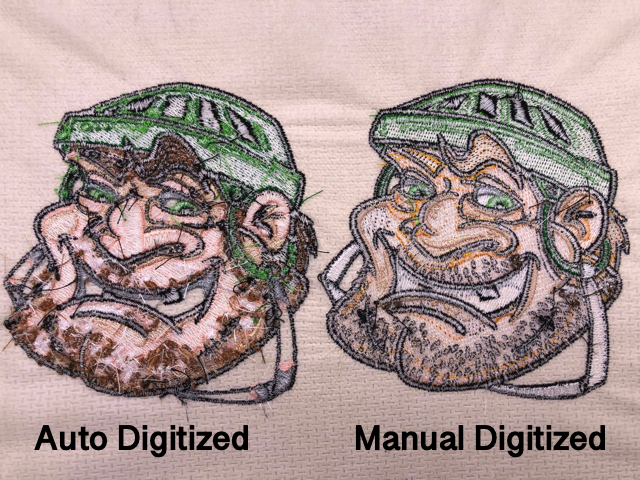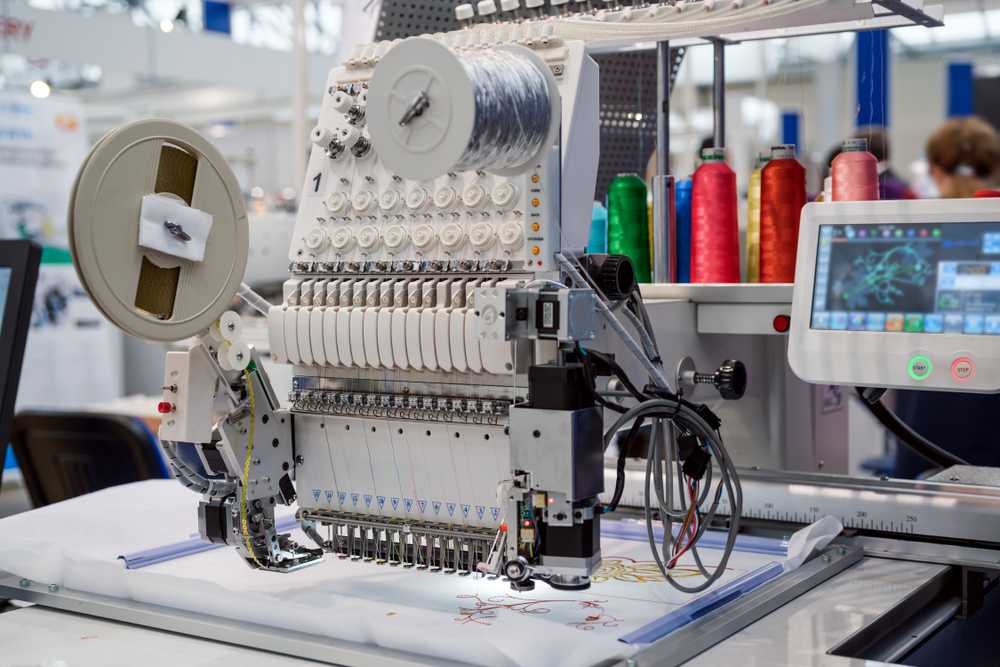Custom Digitizing for Embroidery: Tailored to Your Needs
Custom Digitizing for Embroidery: Tailored to Your Needs
Blog Article
Grasping the Needlework Digitizing Process: Your Ultimate Overview
Embroidery digitizing is a meticulous craft that calls for accuracy and experience to convert intricate layouts into electronic formats for device needlework. As artisans embark on this trip to master the needlework digitizing process, a detailed understanding of the basics sets the structure for quality.

Comprehending Needlework Digitizing Essentials
Embroidery digitizing essentials form the structure upon which complex layouts are converted into machine-readable styles for precise sewing. This initial action in the needlework digitizing procedure is crucial for making certain that the final embroidered item is a loyal depiction of the original design. Recognizing embroidery digitizing basics involves grasping key ideas such as stitch types, sew direction, thickness, padding, and draw compensation.
Sew types play a crucial function in figuring out the visual and textural end result of the stitched style. By choosing the ideal stitch kind, whether it be satin, fill, or running stitch, digitizers can achieve the preferred impact and improve the overall high quality of the needlework. In addition, stitch direction influences the circulation and measurement of the design, while thickness identifies the spacing and protection of the stitches.
Moreover, padding sewing gives security to the design by safeguarding the material and preventing distortion throughout the needlework process. Pull settlement is another important consideration to counteract the all-natural tendency of textile to agreement when sewn. Grasping these needlework digitizing basics is essential for developing professional-quality stitched items.
Picking the Right Digitizing Software Application
Choosing the appropriate digitizing software application is a critical decision that significantly impacts the effectiveness and top quality of the needlework digitizing procedure. Digitizing for Embroidery. When picking the best digitizing software program, it is important to think about variables such as the intricacy of layouts you intend to develop, the user-friendliness of the software, the level of consumer assistance offered, and the compatibility with your needlework equipment
There are various digitizing software application choices offered in the marketplace, varying from fundamental programs for beginners to advanced software for professional digitizers. Some popular selections include Wilcom EmbroideryStudio, Hatch Needlework Software, and PulseID. These software application packages use a large range of devices and attributes to aid you create elaborate styles easily.
Before making a choice, it is a good idea to explore the different software choices through free tests or demos to identify which one best fits your demands. Additionally, reading testimonials and seeking suggestions from skilled digitizers can give useful insights right into the strengths and weak points of each software (Digitizing for Embroidery). By very carefully examining your demands and contrasting the functions of different digitizing software, you can make an informed option that improves your embroidery digitizing workflow
Digitizing Tools and Methods

Optimizing Design Setup for Embroidery
Grasping the details of design settings is fundamental in achieving ideal outcomes in the embroidery Bonuses digitizing process, structure upon the structure laid by comprehending digitizing tools and techniques. When maximizing layout settings for embroidery, it is vital to consider variables such as stitch type, density, rug, draw payment, and registration. Stitch kind choice influences the total feel and look of the design, with alternatives like satin, fill, and running stitches using different appearances and effects. Thickness refers to the spacing and thickness of stitches, impacting the style's coverage and toughness. Correct padding sewing offers stability and prevents material distortion, particularly for complicated layouts or on stretchy materials. Pull payment readjusts for material stretch throughout sewing, making certain accurate design duplication. Enrollment settings line up various aspects of the style properly, keeping general layout integrity. By fine-tuning these style setups, embroiderers can enhance the high quality and accuracy of their stitched productions.

Troubleshooting Common Digitizing Issues
When running into typical digitizing issues during the needlework process, it is necessary to comprehend the origin creates and apply effective remedies immediately. One common trouble is stitch thickness concerns, where stitches may be also thick, triggering the textile to tighten, or too sporadic, resulting in voids in the style. Readjusting the stitch density setups in the digitizing software program can assist solve this problem.
An additional regular difficulty is string breaks i loved this during the embroidery procedure. This can occur because of different reasons such as inaccurate stress settings, boring needles, or utilizing low-quality thread. Guaranteeing appropriate maintenance of the embroidery device, consisting of regular needle changes and tension changes, can lessen the event of thread breaks.
In addition, layout enrollment errors can cause misaligned elements within the embroidery style. Inspecting the style placement in the digitizing software program and making required changes before sewing can aid in avoiding this issue. By attending to these usual digitizing concerns without delay and effectively, you can ensure a smoother needlework process and high-grade finished products.
Final Thought
To conclude, understanding the embroidery digitizing process needs a strong understanding of the fundamentals, the appropriate option of software program, and expertise of devices and methods. Maximizing style setups and repairing usual digitizing problems are critical action in guaranteeing high-grade embroidery outcomes. By adhering to these steps carefully, one can attain precision and performance in the digitizing process.
Report this page